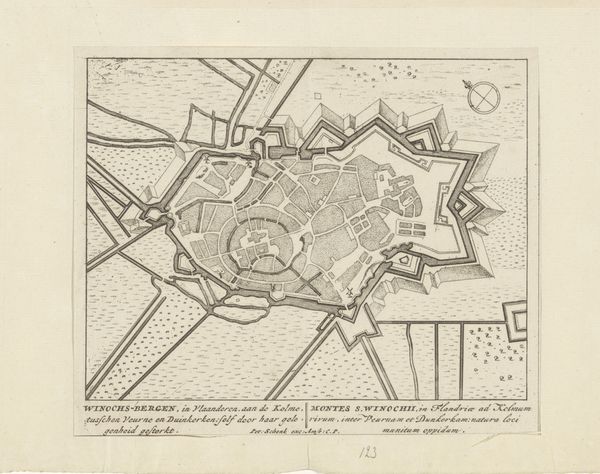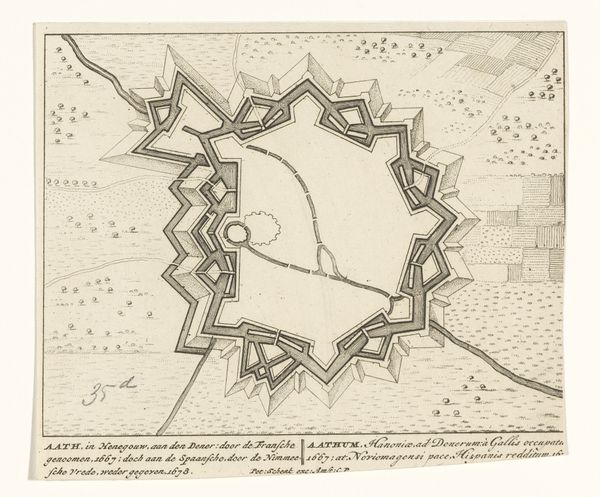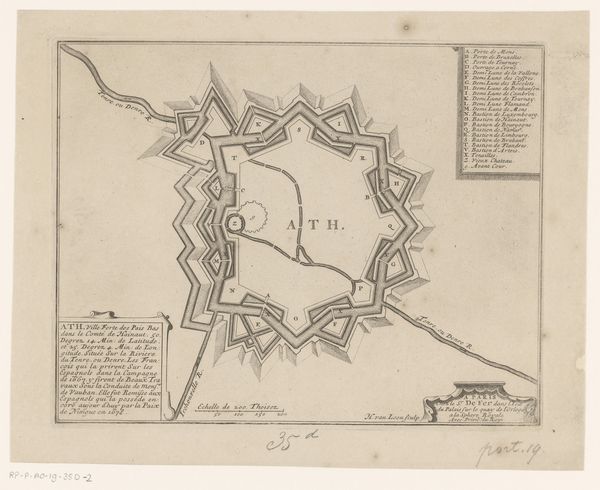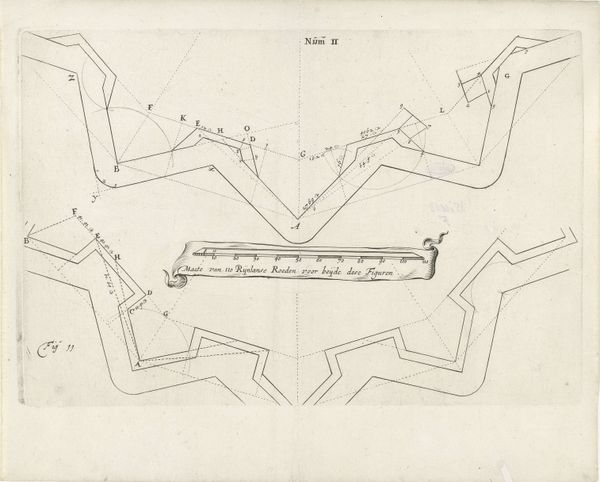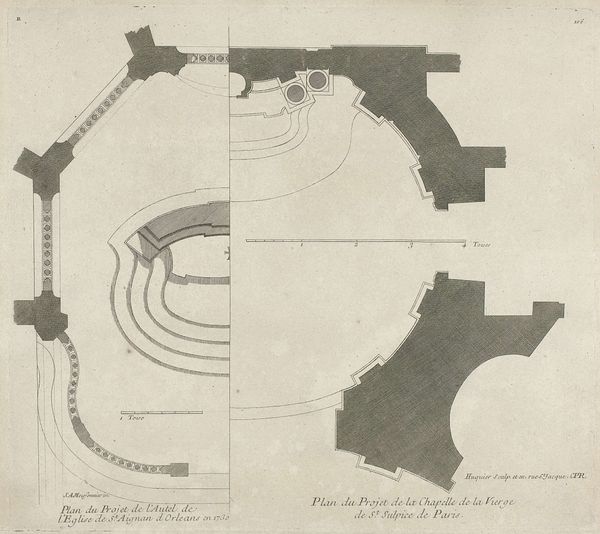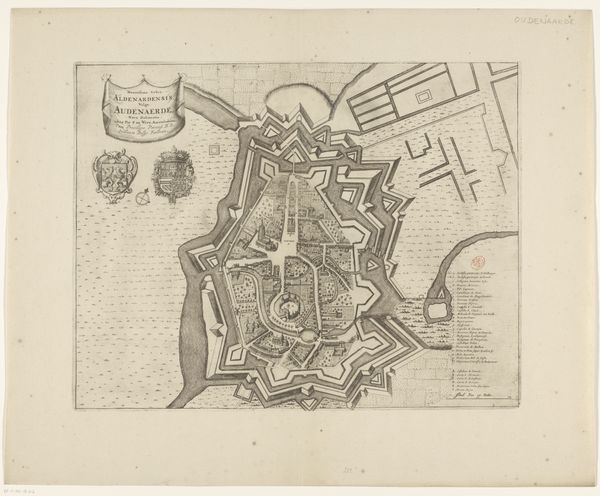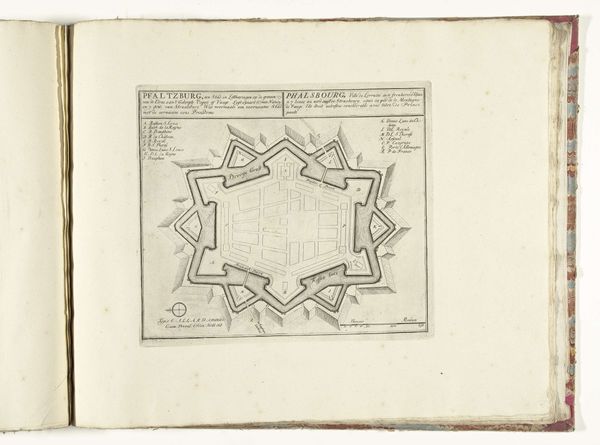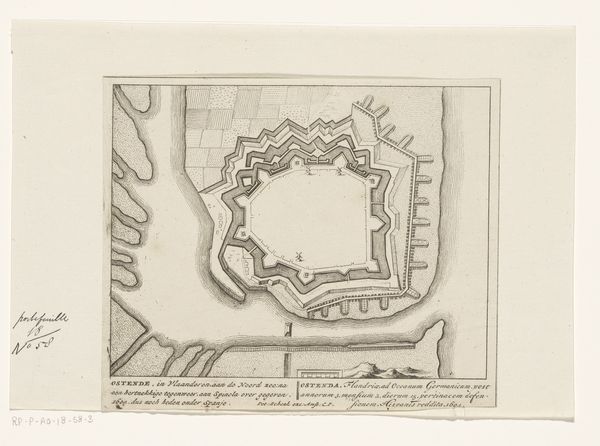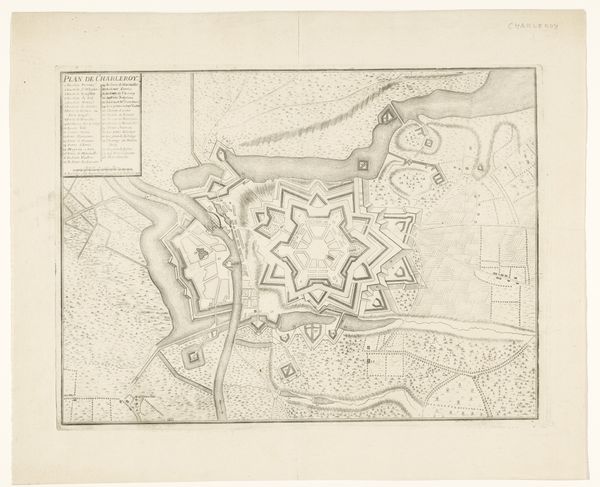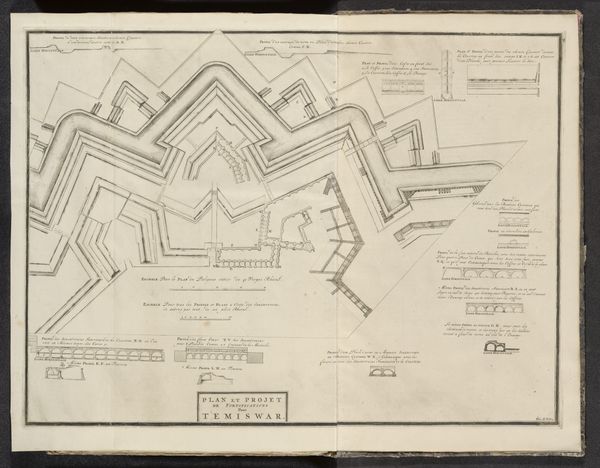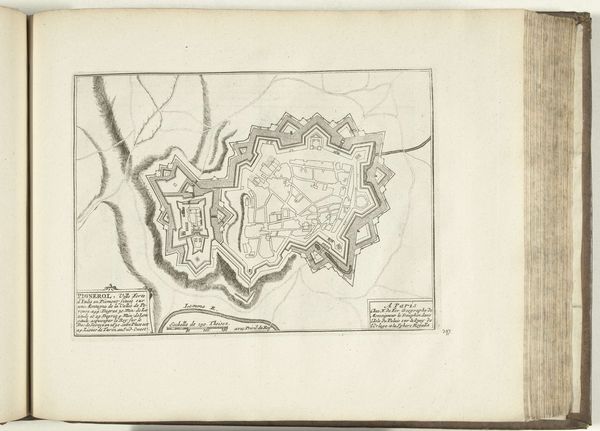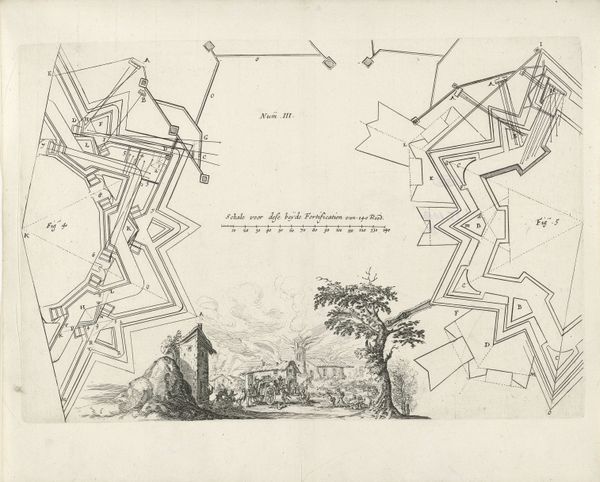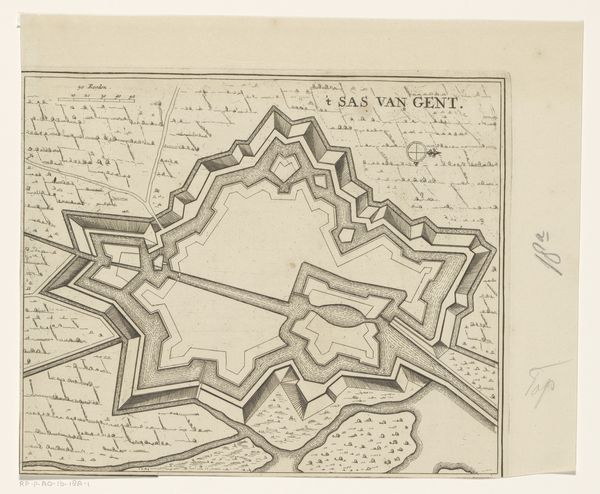
print, engraving
#
baroque
#
dutch-golden-age
# print
#
geometric
#
geometric-abstraction
#
line
#
history-painting
#
engraving
Dimensions: height 230 mm, width 339 mm
Copyright: Rijks Museum: Open Domain
Hendrick Baron van Ruse van Rysensteen made this etching of a fortified rampart. It is made using a printing plate, ink, and paper. The process of etching involves coating a metal plate with a waxy, acid-resistant material. The artist then scratches an image into the wax, exposing the metal beneath. When the plate is submerged in acid, the exposed lines are eaten away, creating grooves. Ink is then applied to the plate, filling these grooves, and the surface is wiped clean. Finally, paper is pressed against the plate, transferring the ink and creating a print. Consider the skill and labor involved. Each line meticulously etched, each print carefully made. In the 17th century, this kind of technical drawing played a vital role in military strategy, urban planning, and construction, shaping the physical landscape through careful visualization and execution. The tools of knowledge are here brought to bear on processes of territorial control. This etching, therefore, is a testament to the intimate relationship between artistry, craftsmanship, and the wider socio-political context.
Comments
No comments
Be the first to comment and join the conversation on the ultimate creative platform.
